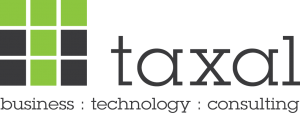The key insights that I took away from Autodesk University this year were not solely centred on what’s ‘shiny and new’, but also to ‘what’s yet to come’.
Of course, there was much to be seen on ‘new’ and ‘shiny’; new products, features, clients and relationships. But what was different this year, was their portrayal of their business as one who’s solutions were to be underpinned and defined by (their) rapidly evolving software platforms.
For their manufacturing business, albeit they’re still maintain some degree of focus on desktop products such as Inventor, their future strategy is clearly being centred on their Fusion platform. Similarly, in a what’s-to-come session, their future AEC (Architectural, Engineering and Construction) business will be underpinned by a platform currently named Quantum. We saw a brief (and very alpha) view of that platform in one of the events’ keynotes.
Autodesk’s Cloud focused strategy is a key enabler to their platform transition. Transitioning from desktop based solutions to next-gen products is a (rapidly evolving) work in progress, but what they’ve achieved to date (Fusion 360, Fusion Lifecycle and Fusion Connect as examples) puts them well ahead of several their major competitors, on several fronts. So too their wholesale transition to subscription models for product use and pricing. Some might have seen these moves as somewhat risky, but current financials and sales figures indicate they are to plan. So too the current ADSK stock price, which reflects market confidence in their tactics, and positive endorsement from (institutional) investors.
On the topic of moving from distinct products to platform based solutions. This move is both rational and valuable. By developing solutions around common Cloud based platforms, for example Fusion for industrial and manufacturing based clients, their ability to more rapidly integrate solutions, extend and develop new functionality fits better to today’s swiftly evolving industrial (manufacturing) software ecosystem. In concert to promoting their platform strategies, Autodesk’s Forge program received much attention. With over $100M under its investment belt, Forge has been tasked with encouraging technology and service-oriented development and partnerships based on their Cloud products and platforms. Forge aims to attract developers well beyond those targeted by Autodesk’s existing ADN (Autodesk Developer Network). These might, for example, include makers, communities, incubators, small-mid-to-large enterprise customers, software developers (as per ADN) and even Autodesk’s internal development teams.
Also highlighted at AU were many examples of innovation and development in areas of Generative Design, AR/VR, IoT and Additive/Hybrid manufacturing. AI is a hot button to many, and being key to their Generative design program, we can expect to see some interesting new products emerging from Autodesk in the very near future.
Not that Autodesk is the only company working on AI, Chris Malachowsky, co-founder of NVIDIA, noted recently that there are over 3000 companies working on AI tech. Amongst these many start-ups, but so too the likes of IBM, Google, Facebook, Amazon..(and also Autodesk). Interestingly, Autodesk is working with IBM Watson to develop better customer support experiences; in the first instance leveraging natural language and machine learning to provide front-line phone support in areas such as licensing, installation etc. One can imagine this will evolve rapidly to deliver much more practical and sophisticated customer support options as time moves on.
On a final note and on the topic of new products, and new thinking….. I played a part in a two-hour panel discussion on the future of Systems Engineering at AU. A very lively, engaging and inciteful discussion which was sponsored by Jon Pittman, VP of Corporate Strategy. Systems engineering might sound a tad left field in the context of a (formerly know as software ‘tool’) provider such as Autodesk, but given their rapid product and platform evolutions, and their knack in developing democratised solutions, one can imagine there might be some very interesting developments might be afoot. Time will tell of course, but watch this space…and follow me on twitter via @allanbehrens for any (public) updates.
